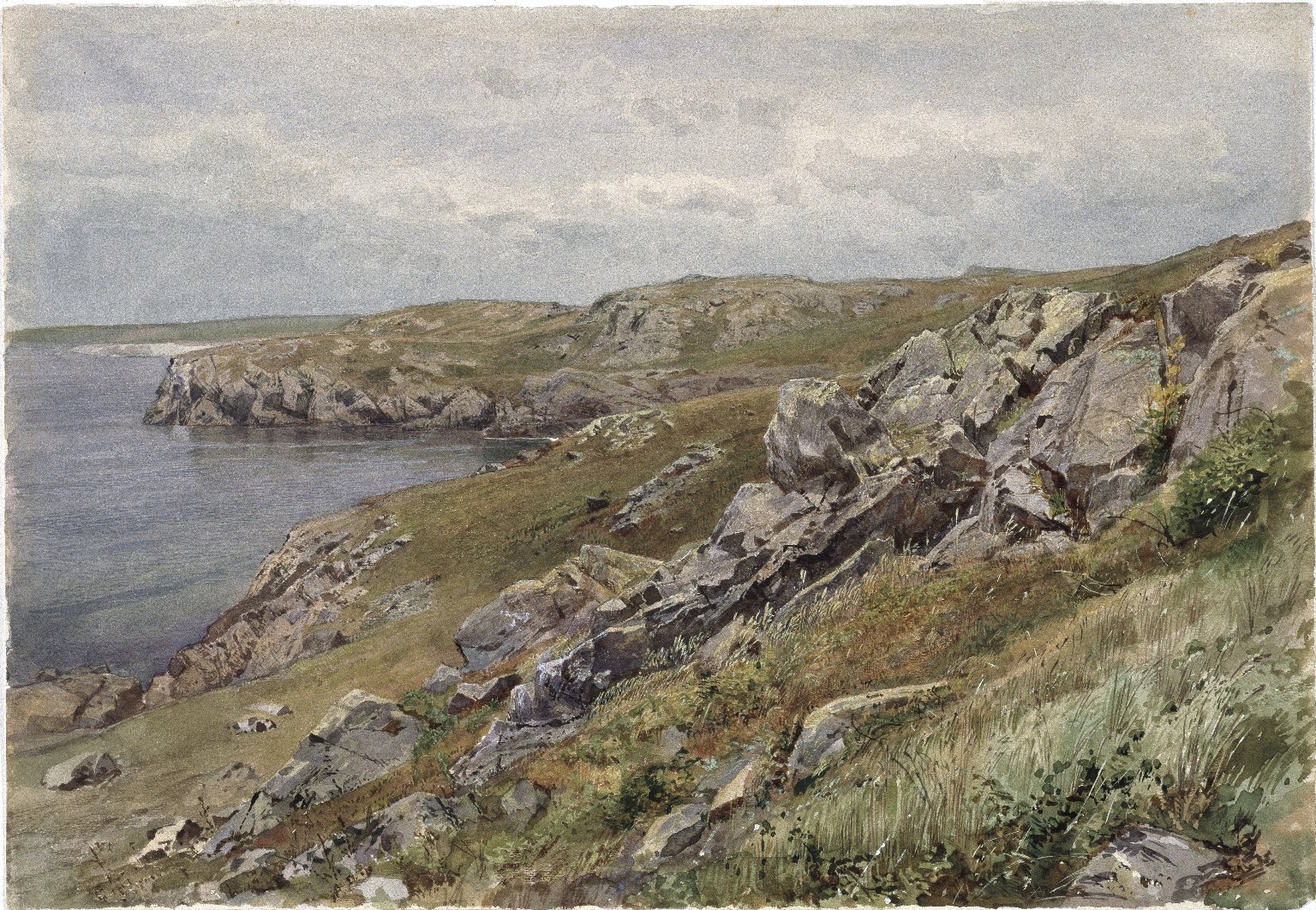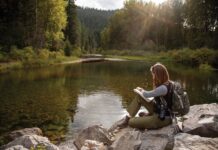
American landscape painter William Trost Richards (1833–1905) was at the forefront of the rise of watercolor painting in the mid-to-late nineteenth century. Inspired by a trip to London in 1855 and a landmark exhibition of British oil paintings and watercolors that traveled to Philadelphia in 1858, Richards began working in watercolor in the late 1850s, producing outdoor studies of landscapes and still life grounded in careful observation of nature.
He took up watercolor again in earnest in the late 1860s and 1870s, gravitating toward marine and coastal scenes that were well suited to the fluid and transparent qualities of the medium. His artistic vision encompassed both panoramic landscapes and close-up studies. Woodland Boulders, an example of the latter, resembles Asher B. Durand’s intimate forest interiors that focus on moss-covered boulders thrust into the foreground of the composition. Like Durand, Richards was devoted to direct observation of geological and botanical details and the belief that God’s presence existed everywhere in nature, even in humble rocks.

To create body and texture, he generally used an additive technique — laying down transparent washes of color and then applying touches of opaque paints. He also experimented with larger formats that approximated the scale and finish of his oil paintings.








